- Eco Housing
- Posted
Sustainable Housing

Can sustainability and social housing be married in one development? Construct Ireland investigates a ground breaking social housing project in West Cork.
That Social Housing projects around the country are of undoubtedly high importance can’t be argued but what makes the work of the Carbery Housing Association in West Cork so particularly interesting is its pro-sustainability approach.
Faced with a situation where such housing schemes were generally being aimed at families, it’s important to Carbery to not only cater for single people and to tackle the issue of young people leaving the high cost area of West Cork, but to demonstrate that such schemes can be environmentally sound. The planned housing scheme at Seafield, near Bantry, is described as “a proposal for a primarily contracted built social housing development based on bioclimatic principles and other sustainable construction approaches”, according to the associations secretary, Jose Ospina.
“We wanted to ensure any development that takes place is done with energy efficiency and sustainability principles’. Funding was sought from the European Commissions Alternative Energy Program (Altener II) to research the viability of such a pilot scheme in a rural Irish Area. Cork County Council’s Energy agency, Blackwater Resource Development and the Northern Ireland Housing Executive all came aboard as partners. Training sessions and presentations were also given with potential residents to educate about such housing.
A recognition of the widespread benefits that the project will have has been reflected in enthusiasm and support from a wide range of people, A fact Ospina is keen to stress.
“We had an architects tendering competition at the beginning and selected Solearth (www.solearth.com), who've been very good at making our case at the different local meetings we've held. We've not found it difficult to get the people who have actually come to us to take on the idea. Another housing association locally has agreed to take the same approach to a project that they're developing on Sherkin Island, and Cork County Council has proposed another sustainable development in Mitchelstown. The problem though has been acquiring land. The cost levels available from the Department of the Environment for the purchasing of land for Social Housing are too low for the sort of land prices you get around here. We've looked at something like fourteen sites and only came across one. It's a ten acre site that was offered to us, and it's not zoned for housing. We have the problem now of getting it zoned for housing. We're just about to put in the planning application.'
Whilst working within the relatively restrained costings, it’s still remarkable how much these houses are at the forefront of sustainable energy technology.
“Geothermal heating is the main innovative proposal on the project. The idea is to use circulation of fluid under the road that leads up to the houses so the infrastructure will contain the water circulation system. There will be heat pumps for at least every 2 houses. There’s also a community building being proposed to hold the heat pumps for a number of houses. The idea is to use Radiant Wall circulation for the hot water. The houses are orientated towards the sun with solar conservatories facing south and solar water heating panel on the roofs of these. The south facing wall will be built from ceramic in order to catch and retain heat, and there'll be circulation of air from the conservatories to the rest of the house, through vents. Heat will also circulate from the kitchens to the bedrooms. For the rest of structure we're considering timber-frame, for the north facing sides and those sides not facing the sun, probably insulated with Warmcell insulation if we can't afford Sheeps wool.
The whole development is being costed by QS in order to make sure that it comes in within the Department of Environment guidelines. The thing to keep in mind is that we’re not going for the most expensive solutions but for the most viable that any housing association could replicate given the funding available. We’re also thinking of going to Leader for part-funding of the community centre”.
Ospina has previously worked on several very similar and successful projects in the UK and has found the experience of implementing such policies here a little more difficult.
‘It’s a bit harder because the precedent of working with professional community housing associations isn’t really there. There’s no precedent for working with someone like Gwalia Housing Association, which was one of our study visits in Wales, a housing association that has developed and manages 5000 homes and works to a fully ecological brief. It’s more established in the UK that local authorities work strategically with housing associations whereas we’re having to pioneer that relationship. Obviously there have been teething problems that we’ve had to overcome by demonstrating to the local authority that we can deliver as a complimentary force, and in an innovative way.”
“Ireland should not be such a large importer of energy, as it has the resources to generate its own. There's appears to be an inbuilt resistance, probably due to vested interests, that needs to be overcome, through dissemination, and education, and successful pilot experiences. One working demonstration project is worth 500 presentations.”
It can only be hoped that other local authorities around the country can take a look at such sterling projects as proposed by Ospina and his colleagues and start to integrate them into their own housing plans. Many people may labour under the impression that issues of sustainability are an inherently middle class pursuit, but the Carbery project is testament that it can be an affordable and viable ecological and economical alternative
Related items
-
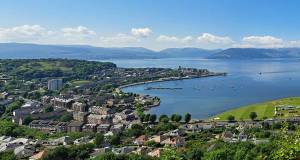 Bonny in Clyde
Bonny in Clyde -
 From Nero to zero
From Nero to zero -
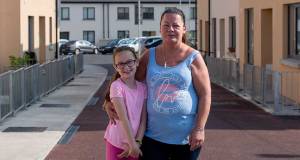 Measure everything
Measure everything -
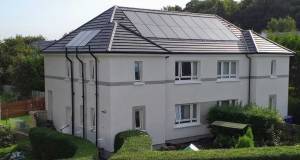 Renfrewshire aims for 3,500 whole-house deep retrofits
Renfrewshire aims for 3,500 whole-house deep retrofits -
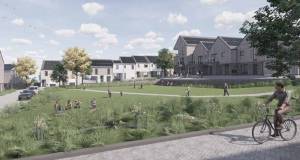 Welsh social housing to embrace passive house, timber & life cycle assessment
Welsh social housing to embrace passive house, timber & life cycle assessment -
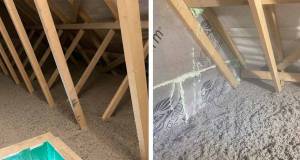 Ecocel on site with 56 homes in Cork
Ecocel on site with 56 homes in Cork -
 Senior college
Senior college -
 COP 26 & the future of the Glasgow tenements
COP 26 & the future of the Glasgow tenements -
 Is affordable housing a policy blind spot?
Is affordable housing a policy blind spot? -
 Government announces €45m for social housing retrofit
Government announces €45m for social housing retrofit -
 Stirling Work - The passive social housing scheme that won British architecture’s top award
Stirling Work - The passive social housing scheme that won British architecture’s top award -
 Higher costs, less benefits - Why the enhanced social housing leasing model is a bad deal
Higher costs, less benefits - Why the enhanced social housing leasing model is a bad deal

